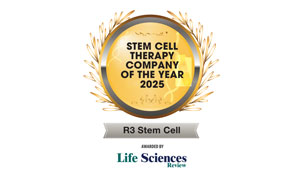Urinary incontinence is not just a medical problem. It can also affect the emotions, mental health, and social life of the person. Many people who have urinary incontinence are afraid to do normal daily activities because they don’t want to be too far from a toilet. Urinary incontinence can keep people from enjoying their life thoroughly. Stem cell therapy is being considered as a treatment method for patients with urinary incontinence.
What is Urinary Incontinence?
Urinary incontinence is leaking of urine that you can’t control. Many men and women suffer from urinary incontinence — the brain and the bladder control urinary function. The bladder stores urine until you are ready to empty it. The muscles in the lower part of the pelvis hold the bladder in place. Typically, the smooth muscle of the bladder is relaxed. This keeps the urine in the bladder. The neck of the bladder is closed, and the sphincter muscles are closed around the urethra. The urethra is the tube that carries urine out of the body. When the sphincter muscles keep the urethra closed, urine doesn’t leak out. Once you are ready to urinate, the brain sends a signal to the bladder. Then the bladder muscles contract. This forces the urine out through the urethra. The sphincters open up when the bladder contracts.
Urinary incontinence is not a disease. It is a symptom of many conditions. Causes may differ for men and women, but it is not hereditary. It is also not just a normal part of aging. There are four types of urinary incontinence, but the two most common forms are stress-related urinary incontinence (SUI) and overactive bladder (OAB). With SUI, weak pelvic muscles let urine escape. It is one of the most common types of urinary incontinence. It is common in older women but is less common in men. SUI happens when the pelvic floor muscles have stretched out too much. Physical activity puts pressure on the bladder then the bladder leaks. Leaking my happen with exercise, walking, bending, lifting, or even sneezing and coughing. It can be a few drops of urine to a tablespoon or more.
SUI can be mild, moderate, or severe. Overactive bladder incontinence is also called urgency incontinence. With OAB, your brain tells your bladder to empty, even when it isn’t full. Or the bladder muscles are too active. They contract to pass urine before your bladder is full. This causes the urge to urinate when you do not need to. The main symptom of OAB is the sudden urge to urinate. You can’t control or ignore this feeling to use the restroom. Another symptom is urinating many times during the day and night. The two less common types of urinary incontinence are mixed incontinence, a mixture of both SUI and OAB and overflow incontinence.
How Can Stem Cell Therapy Treat Stem Cell Therapy?
There are currently animal and clinical trials that have shown the success of stem cell therapy in treating stress-related urinary incontinence and overactive bladder incontinence. After treatment, patients are better able to control their bladder muscles and have less leakage. Stem cells are able to become the smooth muscle tissue that controls the bladder and urination. They replace the damaged smooth muscle cells with healthy ones that are able to function properly.













No Comments